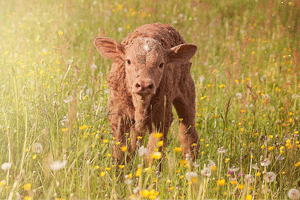You have no items in your shopping basket.
Even Livestock get the LED Light Treatment

To keep livestock at optimal health they require a supply of fresh food, comfortable housing and adequate lighting. So it’s important to take a review of the lighting conditions of livestock, especially dairy cows.The tempestuous weather of Britain mean that livestock end up under lighting that is not suitable to their needs.
Traditionally livestock housing has been lit with halogen lights but more and more farmers are beginning to see how LED lighting is the future of lighting livestock housing. A study by Oklahoma State University actually shows that simply swapping out old lights to LED lights increased the milk yield by 6%.
The study set out to examine how the energy savings of LED lights would perform compared to traditional lighting. The milk output of each cow was monitored as well. Initially there were concerns that the LED lighting could harm the animals, such as interfering the feeding schedule of the livestock. At the end of the study milk production was up which was just one of the many positives to suggest that LED lighting is ideal for livestock housing.
The study suggested that better lighting over the feeding troughs could have helped to encourage feeding for the livestock. This could be replicated through placing High Bay LED lights, these are directional so you could light certain areas to ensure productivity.
Other advantages to using LED lights for livestock housing
There are many theories how LED lights can help livestock, especially cattle. LED lighting stimulates a long summer day which provides 16 hours of light and 8 hours of darkness. Light inhibits the production of a hormone in mammals called melatonin. This hormone is responsible for inducing the sleep cycle.
Using LED lights to simulate long summer days produces healthier, happier cattle which in turns can mean better fertility and shorter calving intervals.
Safer conditions for both animals and workers
LED lights are hardy and reliable, with no more flickering light means safer working conditions for farm workers. The white light produced by LED lighting also allows workers and animals to see more clearly. This can help workers to spot any concerns with the animals early on which in future can ensure the health of the livestock.
LED lighting produces little heat which is a huge factor in livestock housing. The comfort and well being of the livestock is paramount, so LED lighting is one way to ensure just that.
A way to keep costs down
As prices to run a farm keep increasing, installing LED lighting is just one of the main ways to reduce outgoing costs. LED lighting can save up to 80% of energy bills which means an initial investment very quickly pays back for itself.
LED lights can be dimmed during periods of natural light which can further reduce costs. The long durability of LED lighting also brings a reduction in maintenance. This reduces the need to disturb the cattle and the need to use specialists to change the lights.
